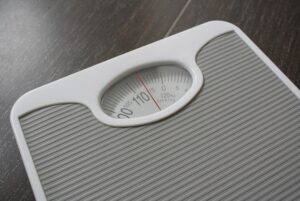 A new retrospective cohort analysis published in Hemodialysis International has found that dialysis patients who gain weight in long intervals between dialysis sessions risk elevated mortality rates and quicker decline in kidney function. The authors of the study, including corresponding author Ramy M Hanna (University of California Irvine, Orange, USA), were led by Yoshikazu Miyasato (Kumamoto University Graduate School of Medical Sciences, Kumamoto, Japan).
A new retrospective cohort analysis published in Hemodialysis International has found that dialysis patients who gain weight in long intervals between dialysis sessions risk elevated mortality rates and quicker decline in kidney function. The authors of the study, including corresponding author Ramy M Hanna (University of California Irvine, Orange, USA), were led by Yoshikazu Miyasato (Kumamoto University Graduate School of Medical Sciences, Kumamoto, Japan).
Miyasato and colleagues outline in their introduction that interdialytic weight gain (IDWG) “is crucial in the association between long interdialytic intervals and mortality” in patients undergoing haemodialysis. Identifying a gap in the existing literature, they argue that there has yet to be a full analysis of IDWG’s effect on residual kidney function (RKF). Defined as IDWG “in the two-day break between dialysis sessions”, IDWG during long haemodialysis intervals (IDWGL) and its relationship with both mortality and RKF decline were the focus of the study.
The retrospective study saw the authors analyse data from haemodialysis patients in the USA during the period 2007–2011. Seven degrees of IDWGL (0% to <1%, 1% to <2%, 2% to <3%, 3% to <4%, 4% to <5%, 5% to <6%, and ≥6%) were examined alongside mortality rates, using Cox regression models, as well as in relation to rapid decline of renal urea clearance (KRU), with the latter analysed with logistic regression models. Mortality was examined in 35,225 patients and rapid KRU decline in 6,425 patients.
“Higher IDWGL categories were linked to increased risk of adverse outcomes,” the authors explain. The analysis of all-cause mortality yielded multivariate adjusted hazard ratios (95% confidence interval) of 1.09 (1.02–1.16) for 3% to <4% IDWGL, 1.14 (1.06–1.22) for 4% to <5%, 1.16 (1.06–1.28) for 5% to <6%, and 1.25 (1.13–1.37) for ≥6%. The authors also detail that the ratios for rapid decline of KRU for 3% to <4%, 4% to <5%, 5% to <6%, and ≥6% IDWGL were 1.03 (0.90–1.19), 1.29 (1.08–1.55), 1.17 (0.92–1.49), and 1.48 (1.13–1.95), respectively.
Miyasato et al note that they also analysed the continuous relationships between IDWGL and study outcomes using restricted cubic spline analyses. “When IDWGL exceeded 2%,” they explain, “the hazard ratios of mortality and the odds ratios of rapid KRU decline continuously increased.” Reviewing the findings in their discussion, the authors state that higher IDWGL was associated with both elevated mortality risk and rapid KRU decline, with greater adverse outcome risk with an IDWGL level above 2%. “Therefore,” they conclude, “IDWGL may be utilised as a risk parameter for mortality and RFK decline.”












